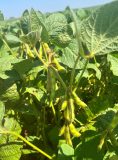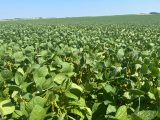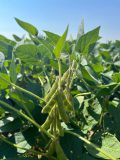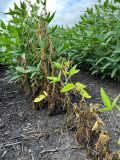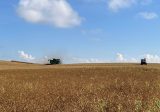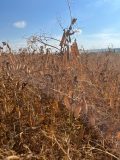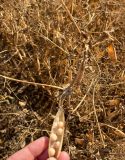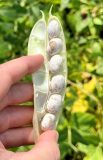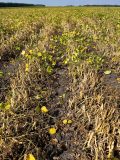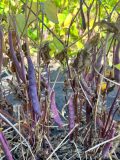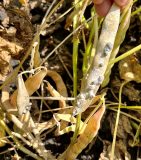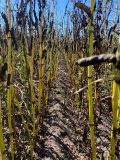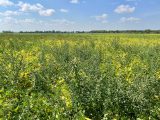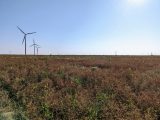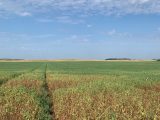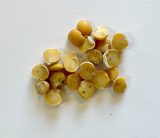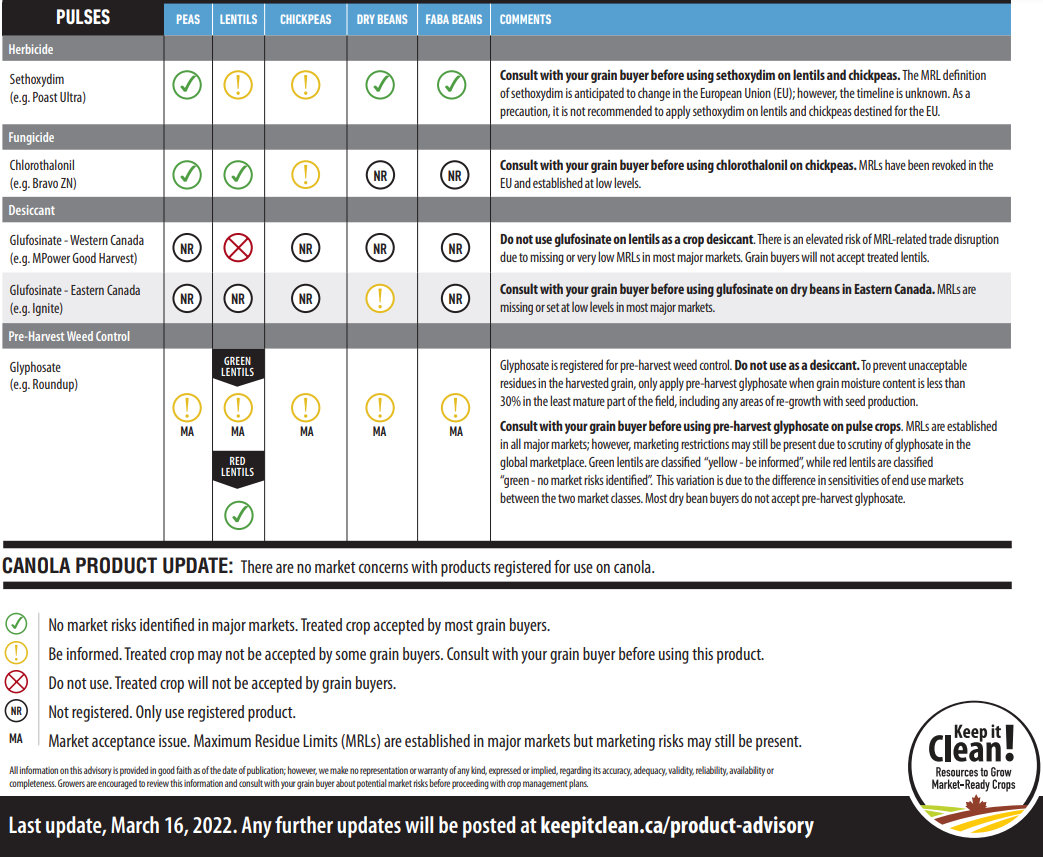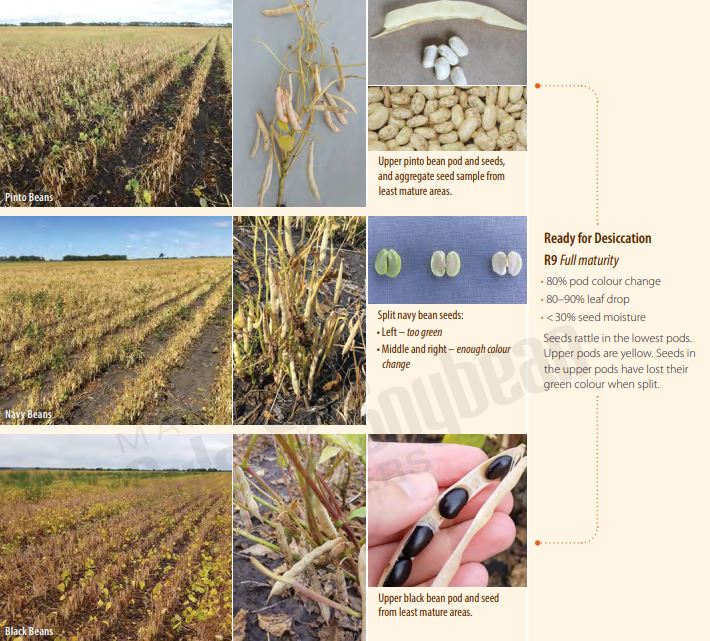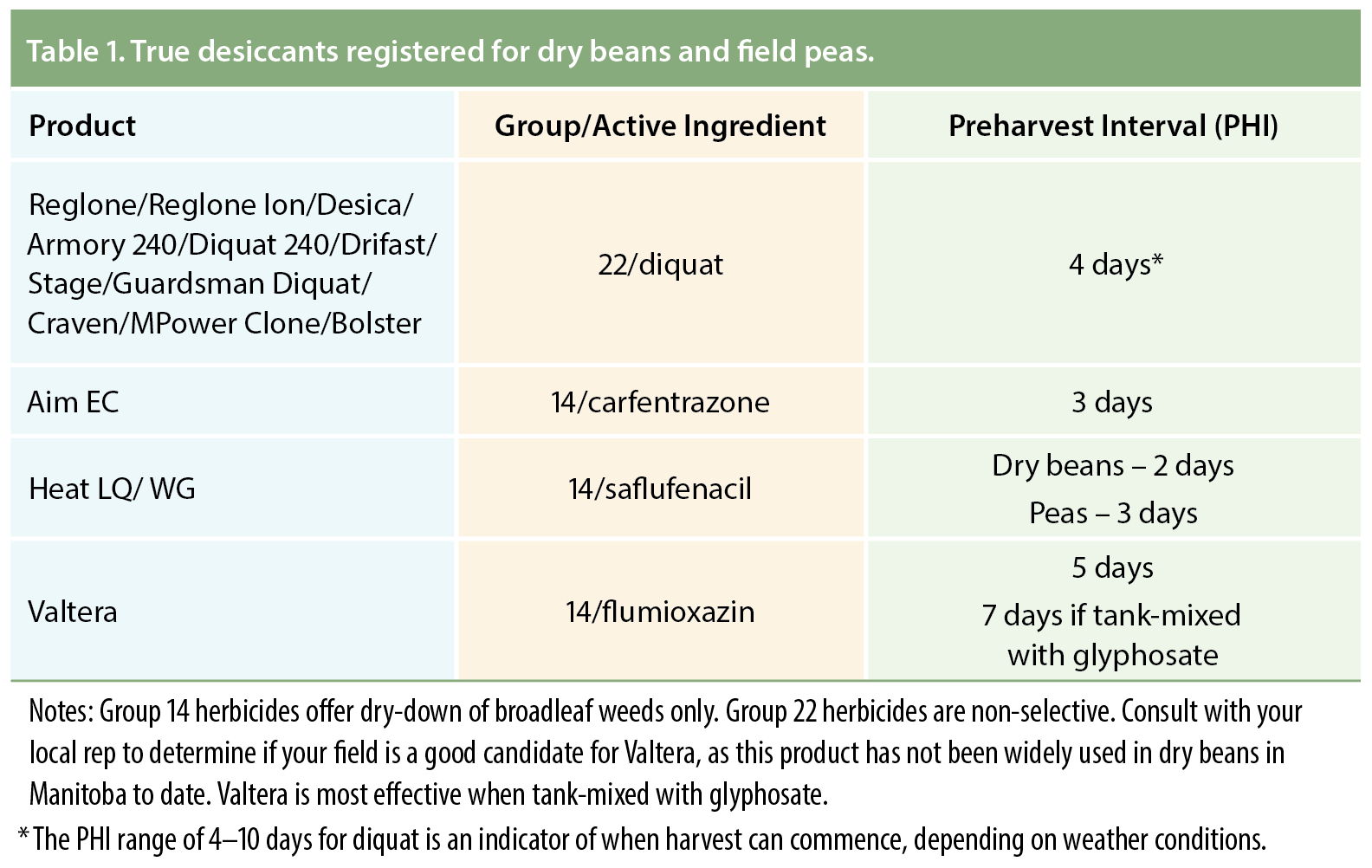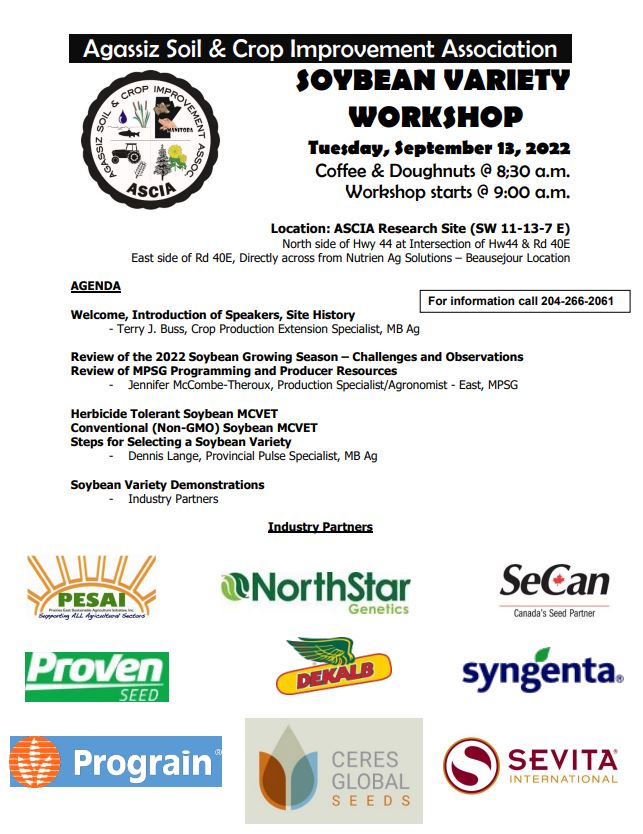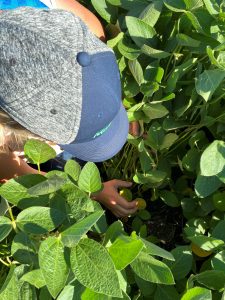 AUGUST 31, 2022
AUGUST 31, 2022
- Crop and Scouting Update
- Successful Desiccation Decisions in Peas and Beans
- Maintaining Pea Seed Quality
- Excessive Weed Pressure: Preharvest Weed Control
- Keep it Clean’s 2022 Product Advisory
- Dry Bean Desiccation and Harvest Guide
- Soybean Yield Estimator
- Upcoming Events: ASCIA Soybean Variety Workshop in Beausejour
Listen to the Bean Report:
Crop and Scouting Update
- Soybeans are at R5 (beginning seed) to R6 (full seed).
- Soybean aphids are continuing to be present in several regions at varying thresholds. Heavy rains can also knock back aphid populations as well. Continue to scout until R6 when seeds are firm.
- Grasshoppers are continuing to be present in some fields and need to be monitored.
- Phytophthora Root Rot (PRR) is a root and stem disease specific to soybeans that can infect at any growth stage. New this year is a soil test to identify the races of PRR in a field from AYOS Technologies. We wrapped up the last of our sampling this week and are looking forward to sharing these results.
- We are seeing higher biomass in soybean crops this year and conditions suitable for disease development. With our regular scouting and the completion of the soybean disease survey we have seen fairly low stem and foliar disease pressure. However, we are starting to see some small levels of late infection of white mould. Generally, this has not been a widespread yield-limiting disease in Manitoba. If you are seeing white mould in your soybean crop, research from Michael Wunsch with North Dakota State University has shown that from 50 field studies in North Dakota from 2012 to 2015, the soybean yield losses associated with every 10% increase in white mould ranged from 1.3 to 5.5 bu/ac. To put this in perspective if you have 160,000 plants/ac = 16,000 plants would need to be affected by white mould to reduce yield by 1.3 to 5.5 bu/ac.
- We are continuing to scout for this disease and recommend keeping an eye out for it while in your fields. To scout for white mould – infections begin at nodes along the main stem. Wilted plants may be spotted from afar. Within a humid canopy you may find white mycelial growth and black sclerotia bodies later in the season.
- Field peas range from R5 (beginning maturity) to R8 (ready to harvest) stages.
- With the wide range of seeding dates, soil types and drainage we are seeing variability in staging and harvest timing. In many fields we are seeing areas with better drainage maturing faster than lower areas which are holding on and staying green for longer. These sunny warm days ahead will help maturity progress. Desiccation have been completed in some fields with harvest underway in others. For growers considering their harvest options – check out our Field Pea Desiccation and Harvest Guide along with our Scouting Sessions Video on Timing Desiccation and Preharvest Applications in Yellow Peas.
- Dry beans range from R7 (full seed) to R8.5 (mid maturity) stages.
- Monitor grasshopper defoliation levels and if any pod feeding is evident. Watch for lygus bugs in light-coloured beans and potato leaf hoppers.
- The next item on dry bean growers mind is harvest and getting ready to under cut, swath or desiccate.
- Faba beans are at R5 (full pod) to nearing R8 (full maturity) where seeds fill the pod cavity and most pods are dark brown/black.
- Lygus bugs have been confirmed in some faba bean fields. Their sucking mouth parts pierce pods and seeds and will make pin holes in the seed coat. Lygus do not affect yield but seed quality is affected and can cause downgrading. Check out the scouting session video on Lygus Bugs in Faba Beans here.
Successful Desiccation Decisions in Peas and Beans
Crop desiccation has become an increasingly hot topic. In part due to consumer demand for pesticide-free products, variable maximum residue limits (MRLs) across export markets and the negative spotlight on glyphosate. It doesn’t mean desiccation is off-limits. But we need to understand the limitations of late-season herbicide. Especially when it comes to crops destined for human consumption, including field peas and dry edible beans.
Desiccation vs. preharvest weed control
Desiccation is the application of a contact herbicide or true desiccant that will dry down plant material and advance harvest. True desiccants provide rapid dry-down in one to three days and do a much better job of advancing maturity than letting the crop dry on its own. They also help dry down weeds to ease harvest and maintain quality. Preharvest weed control most often involves the application of a systemic herbicide like glyphosate (e.g., Roundup) that will control excessive weed pressure (especially perennials) before harvest. This is not meant to speed up maturity or dry down the crop faster. Glyphosate will offer some dry-down, but do not expect to see it until a week or two after application.
If your main goal is to advance maturity, desiccants are the best fit for rapid dry down of plant material.
Getting your application ‘just right’
The real risk is applying late-season herbicide too early. Applying too early leaves high residue concentrations in the seed and can cause yield and quality loss. At the late end of application, we also need to stay within each product’s preharvest interval (PHI). Consider yourself Goldilocks and aim for ‘just right.’
Check out our in-depth desiccation and harvest guides for field peas and dry beans to make sure you are on track for application timing.
Do I really need that late-season herbicide?
The decision to pull the trigger on desiccation or preharvest weed control depends on a combination of factors. Here are a few questions to run through as you consider whether late-season herbicide is truly needed:
Do I have a stagey crop with areas maturing at different rates?
Estimate how much these areas differ in maturity. If some areas are way behind, consider harvesting in stages. Some of these green spots could stay green for a long time. This means an increased risk of residue concentration in the seed sample if product is applied. If there isn’t a huge difference in maturity across the field and product application can be timed appropriately, desiccation could be your friend.
Are there weeds that need to be controlled?
Consider the types of weeds present, their populations, distribution within the field and development stage. Your main targets are perennials (e.g., Canada thistle) that are best controlled by herbicide application ahead of winter. Although green weeds of any kind can pose a threat to quality, especially for dry beans. You also need a high enough weed population to justify the cost of application. Maybe the weeds can be managed in patches. Or maybe post-harvest management is a better strategy if weeds have already set seed and you can live with some going through the combine. Generally, pea harvest is early enough to leave time for weed control after.
How far away from harvest is the majority of the crop?
If most of your crop is close to harvest, late-season herbicide may not even be an option for you depending on the product and its PHI. Also consider your crop’s potential to mature naturally without a desiccant and weather conditions that will aid in maturity. You may not need a desiccant if the crop is already progressing nicely.
What are the weather conditions like during crop maturity?
If you wait for natural dry-down of beans and peas, particularly in years with lots of vegetative growth and high moisture during maturity, there is a risk of pod shatter, sprouting, seed coat slough and post-maturity disease. There is also the risk of bleaching in green peas. Under these conditions, desiccation may be a good choice.
Product performance is also impacted by weather conditions. Diquat works best under cloudy conditions or in the evening. Saflufenacil is the opposite — it needs sunlight for activity and should be applied during daylight hours under clear skies. And glyphosate prefers warm, sunny conditions when weeds are actively growing.
What grade are you targeting?
Whether you’re aiming for No. 1 or No. 2 peas may influence your late-season herbicide decisions. Specifications for No. 2 peas are more lenient on seed colour and staining. For dry beans, where you’re normally aiming for a No. 1 grade, we recommend being especially cautious about lush, green weeds mixed with soil going through the combine that can cause downgrading. Check in with your buyer on any additional specifications they may have for their markets or processing needs.
What crop are you planning to grow after?
Watch for any re-cropping restrictions associated with a given product and crop combination. Two examples: 1. dry beans can only be planted the second season after preharvest application of Heat on the previous crop, and 2. potatoes can be grown the season after spring application of Valtera but not after fall application.
Maintaining Pea Seed Quality
Your harvest operations and weather during harvest can affect seed quality which is important for marketing peas. For a full list of grading factors look at the Canadian Grain Commissions grading factors for peas here and the differences between a No.1 and No. 2 here. A few grading factors to keep in mind this harvest and to monitor in your sample as you combine and tweak settings are:
- Soybean contamination: some pea buyers have strict restrictions on soybean contamination in their pea contracts due to challenges around cleaning soybeans out of peas, and the fact that soybeans are an allergen and GMO crop. Check out these tips for combine clean-out before you start into pea harvest if your market has these restrictions.
- Cracked seed coats and splits: these occur when seed is too dry and/or cylinder or rotor speeds are too high. Harvesting at 18-20% seed moisture and slowing cylinder speed with drier grain can reduce seed damage. Run combine and grain cart augers/belts at low speeds and at full capacity.
- Shriveled seed: seed appears dimpled and shrunken if plant senescence occurred while seed was still immature. Carefully timed swathing or desiccation will avoid this issue.
- Bleaching: a grading factor only in green peas, bleaching is caused by excessive moisture (rainfall or humidity) at crop maturity, causing a yellow colour on the cotyledons. Desiccation and prompt harvest can reduce the risk of bleaching.
- Earth tag: a greater issue in peas than in other crops due to the nature of cutting low at harvest and the texture of the seed coat (which retains dirt). If you are finding earth tag on the seed, check for soil sticking to the flighting on your combine augers. Reduce earth tag by minimizing green or dewy plant material passing through the combine and if necessary, lift the cutting bar.
- Pink peas: hail can damage pods and allow the bacteria Erwinia Rhapontici to enter and stain peas pink.
- Spoilage: as the peas enter the bin, measure BOTH the grain temperature and moisture, both are equally important for safe storage. If the initial temperature and moisture are within the “no spoilage” zone of Figure 3, grain can be safely stored for up to five months. A general recommendation is to use aeration fans to condition, cool and dry the crop to at least 16% moisture and 15°C. Your grain contract may have a lower moisture requirement.
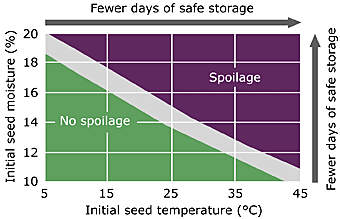
Excessive Weed Pressure: Preharvest Weed Control
The Importance of Using Glyphosate Carefully:
- Markets around the world are testing more frequently for chemical residues. Testing is more readily available, cheaper and easier to do than in the past. As a result, there is more scrutiny in the global marketplace.
- Maximum residue levels (MRLs) for glyphosate in pulse crops vary throughout the world and are lower in several Canadian export markets than in Canada. This presents a risk to Canadian farmers. Some markets have no tolerance for glyphosate altogether, due to consumer demand.
- This means it is more important than ever to use glyphosate correctly, following label directions and using it for preharvest weed control, not as a desiccant. Staging for applications is critical – applying once the crop is below 30% seed moisture, which is described in the article linked above.
Are you considering or did you use glyphosate as a preharvest tool this year?
Pulse Canada has developed a Farmer Quality Testing Program to provide free, confidential residue testing for farmers and agronomists to ensure the proper application timing of preharvest glyphosate for pulse crops. The results of the program will allow farmers to further ensure the effective application of pre-harvest glyphosate and maintain the world-class quality of Canadian pulses. Peas, lentils, chickpeas and faba beans qualify. Interested in this opportunity? Check it out here.
Keep it Clean’s 2022 Product Advisory
Dry Bean Desiccation and Harvest Guide
Dry beans are ready for desiccation when:
- Overall maturity in your plants you want to see at least 80 – 90% leaves have dropped
- 80% of the pods turned to a yellow tan colour
- Less than 30% seed moisture in the least mature part of the field
- The seeds rattle in the lowest pods and the upper pods are yellow.
- The seeds in the upper pods have lost their green colour when split.
See the Dry Bean Desiccation and Harvest Guide for photos for more information on timing desiccation applications. Consult with your buyer on the products they accept and ensure you’re following the preharvest interval.
Soybean Yield Estimator
Do you have the Bean App? If not, download it for free today in the Google Play and App Stores! Bean App – Manitoba Pulse & Soybean Growers.
Soybeans have great potential this season – curious what your field may yield? Give the Soybean Yield Estimator a try to see what you can expect from your 2022 soybean crop. Follow the steps in the app tool and remember, random sampling and multiple samples are key for a better estimate.
Upcoming Events:
The Final Piece of the Data Collection Puzzle
The season is winding down and the On-Farm Network (OFN) is finalizing data collection with late season plant counts. In fact, as you read this, the OFN team is likely in one of the seven fields remaining to be counted. Early season plant counts taken at the beginning of the season will be compared to these late season plant counts to determine if row spacing or seeding rate influenced plant population throughout the season. And of course, the final piece of the data collection puzzle is yield. Combine sightings are increasing and the OFN is looking forward to analyzing the complete set of trial results, which will be released in the winter. In the meantime, check out our past single site reports on our online database: https://www.manitobapulse.ca/on-farm-network/on-farm-research-reports/.
For questions or more information on getting involved in the OFN, contact Leanne at leanne@manitobapulse.ca.

